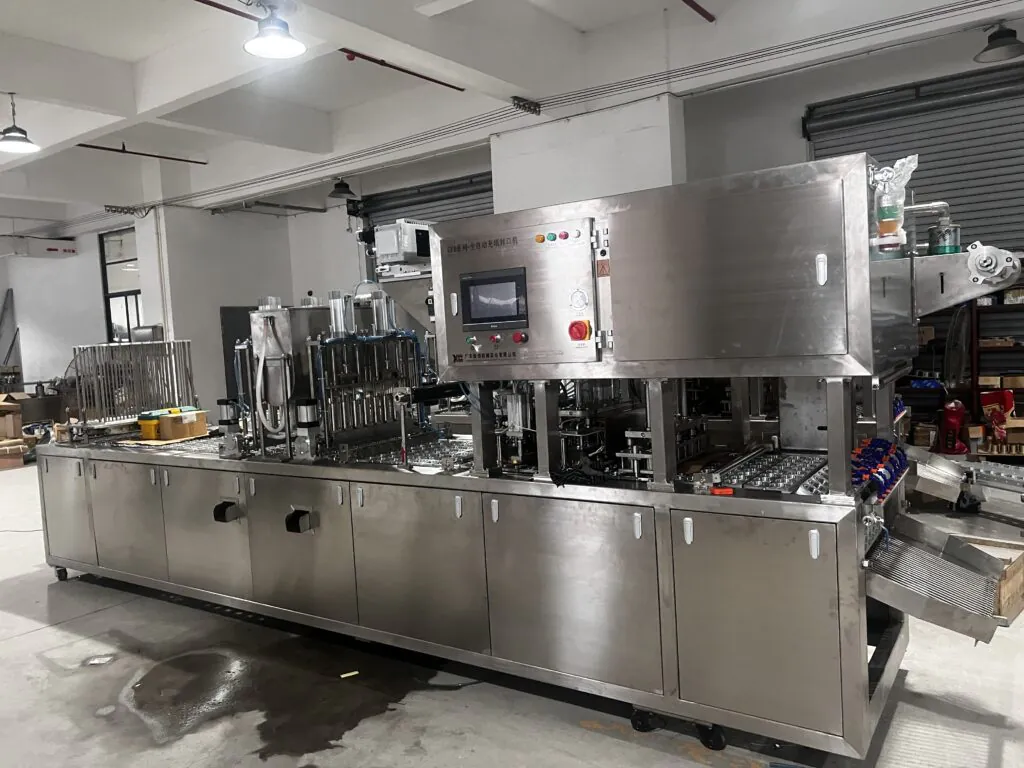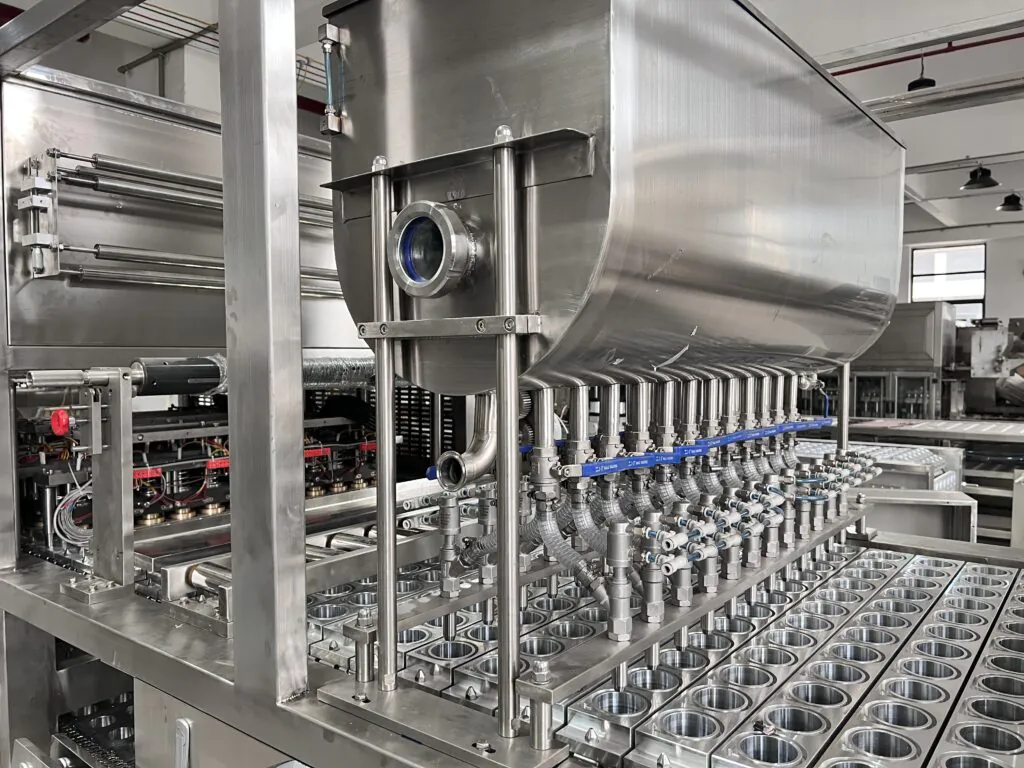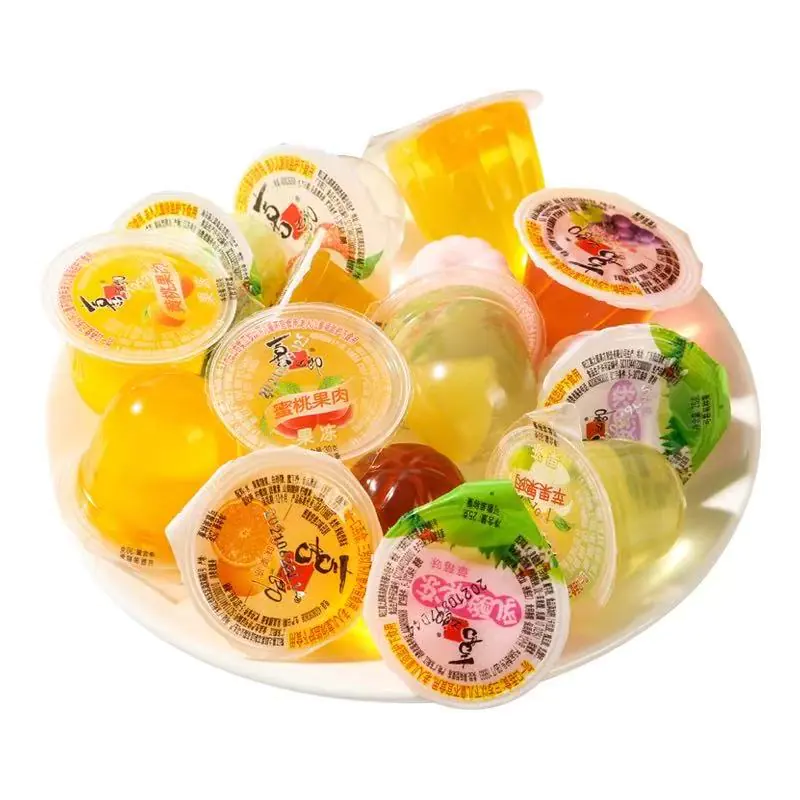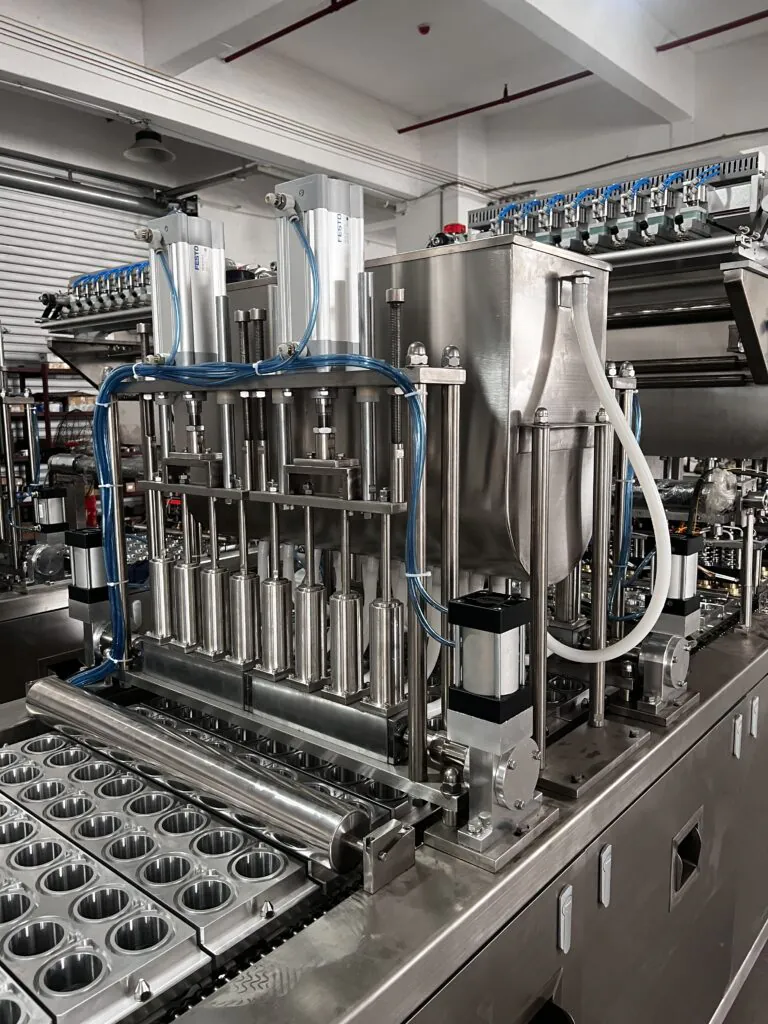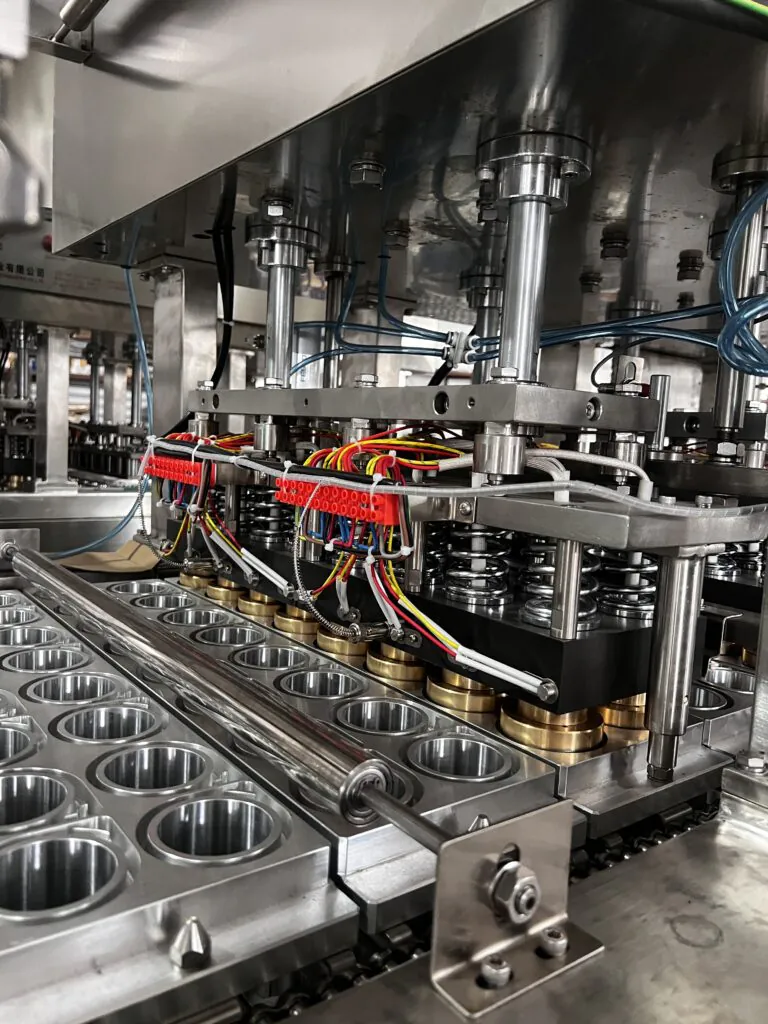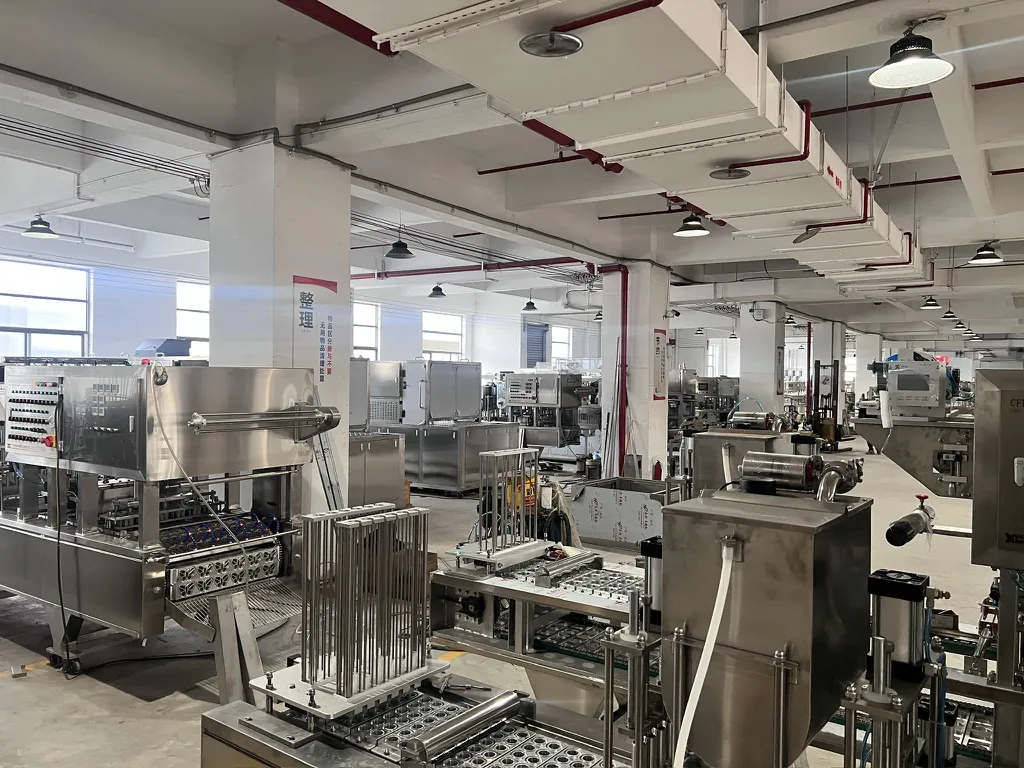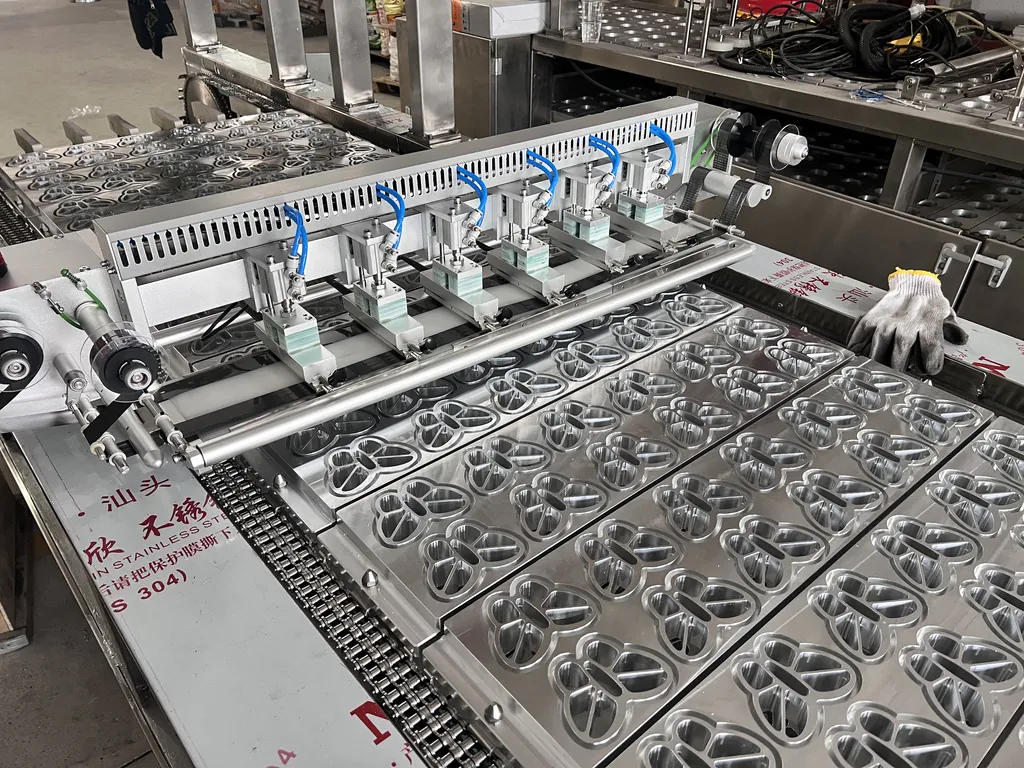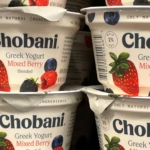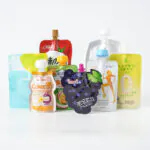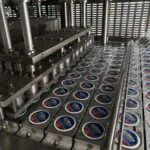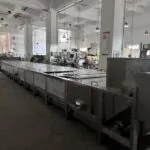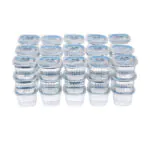
How to Choose the Perfect Jelly Filling and Sealing Machine?
Choosing the right machine can feel overwhelming. A wrong move leads to production headaches and wasted money. This guide will walk you through the essential steps to make it simple.
The best jelly filling and sealing machine offers precise filling to prevent waste, is made from acid-resistant materials like stainless steel, and provides a guaranteed leak-proof, two-step seal. Also, you must balance the automation level with your budget and choose a capacity that meets your production goals.
Finding the right equipment is a critical decision for your business. I’ve been in this industry for a long time, and I’ve seen how the right machine can make a company successful, while the wrong one can cause endless problems. Let’s break down the most important factors you need to consider. We will go through them one by one, so you can make an informed choice that helps your business grow.
Is Filling Accuracy the Most Important Factor?
Inaccurate filling directly wastes your product and your money. This small issue eats away at your profits with every single cup you produce, which adds up to a big loss.
Yes, filling accuracy1 is absolutely critical. A precise piston filling system2 is the key to preventing waste from overfilling and ensuring a consistent product for your customers. For me, this is the first thing I check because it directly protects my profit margins and brand reputation.
Accuracy is number one because it hits your wallet directly. Every bit of extra jelly you put in a cup is product you aren’t selling. If you underfill, your customers will feel cheated. Consistency builds trust in your brand. That is why getting the filling volume right every time is so important for a successful operation. It’s not just about saving money; it’s about building a brand that people trust.
Piston Fillers – The Industry Standard
Most jelly filling machines use a piston filling system. It works very simply. A piston pulls a specific amount of jelly into a cylinder and then pushes it out into the cup. The best part is that you can easily adjust this volume. This allows you to fill different cup sizes or change the product weight without needing a whole new machine.
What to Look For
When you inspect a machine, look at the quality of the piston filler. The piston and cylinder must be made from high-quality stainless steel. Also, check for anti-drip nozzles. I remember one of our first machines didn’t have good nozzles. The production line was always a sticky mess. We lost a surprising amount of product and wasted so much time just cleaning the machine every day. Good nozzles solve this problem.
| Feature | Benefit | My Experience |
|---|---|---|
| High-Precision Piston3 | Reduces product waste to less than 1% | This saved my company thousands of dollars in the first year alone. |
| Anti-Drip Nozzles4 | Keeps the machine and cups clean | We cut our daily cleaning time in half and stopped wasting product. |
| Easy Volume Adjustment | Lets you switch between product sizes fast | We could change from 100g to 150g cups in just a few minutes. |
Why Does the Machine’s Material Matter for Jelly?
You might notice your machine starting to corrode much faster than you expected. This corrosion can contaminate your jelly and lead to expensive breakdowns, creating a food safety nightmare5.
Jelly is an acidic food product. This acid can eat away at regular metals. You must choose a machine made from high-quality, acid-resistant stainless steel6, like SS304 or SS316, to prevent contamination, ensure food safety, and guarantee a long life for your equipment.
Many food products, including jelly, contain natural acids like citric acid for flavor and preservation. While these acids are perfectly safe to eat, they are not friendly to all types of metal. Over time, this acid will cause corrosion on machines made from inferior materials. This is a serious issue you cannot ignore. The material of your machine is just as important as its mechanical function.
The Risk of Using the Wrong Steel
If you use a machine made with the wrong type of steel, corrosion will begin. Tiny metal particles can flake off and mix into your jelly. This is a huge food safety risk and can lead to product recalls that destroy your brand’s reputation. At the same time, corrosion weakens the machine’s parts, leading to more frequent breakdowns and expensive repairs.
SS304 vs. SS316
You will often hear about two types of stainless steel for food machinery.
- SS304: This is the industry standard for most food equipment. It has good resistance to corrosion and is suitable for many applications.
- SS316: This is a premium-grade steel. It contains an element called molybdenum, which makes it even more resistant to acids and salts. If your jelly is very acidic or if you use strong chemicals to clean your machines, SS316 is the safer choice.
I always tell my clients to ask the supplier to confirm the exact grade of steel used for all parts that touch the product. I once visited a factory in Saudi Arabia and saw a competitor’s two-year-old machine with rust on the filling nozzles. That is a disaster. At Xinchuang Machinery, we guarantee all product contact parts are at least SS304 to protect our customers.
How Can You Guarantee a Leak-Proof Seal?
Customers are calling to complain about leaky jelly cups they bought. This damages your brand’s reputation, leads to costly product returns, and can get you delisted from store shelves.
A perfect seal is not optional. The best method to guarantee no leaks is using a two-step heat sealing process. The first seal bonds the film to the cup, and the second one reinforces it. This process ensures a strong, reliable seal every single time.
The seal on your jelly cup does more than just prevent leaks. It protects the product from air and bacteria, which is essential for shelf life. It also has to be strong enough to survive shipping and handling, especially for our customers exporting to countries like Congo or shipping across large regions like Russia. A weak seal means spoiled products and lost revenue. For me, the seal is the final promise of quality to the customer.
The Two-Step Sealing Process
To get a reliable seal, a two-step process is the best way.
- First Seal: This is the main sealing stage. A heated plate presses the sealing film onto the rim of the plastic cup. The heat melts a thin layer on the film, bonding it to the cup. Precise temperature control here is very important.
- Second Seal: This is the reinforcement stage. A second plate, often at a slightly cooler temperature, presses down on the seal again. This smooths out any tiny imperfections and ensures the bond is completely airtight and secure.
Factors Affecting Seal Quality
Three things control the quality of your seal:
- Temperature: If the heat is too high, it will burn the film. If it’s too low, the film won’t bond properly.
- Pressure: The pressure from the sealing head must be even across the entire rim of the cup.
- Dwell Time: This is the amount of time the heat and pressure are applied. It has to be just right.
I have seen many problems with cheaper, single-seal machines. Even a tiny drop of jelly on the cup’s rim can cause a leak with a single seal. The two-step process provides that extra layer of security. It’s a standard feature on our machines because we know how important it is for our customers.
How Does Automation Level Affect Your Choice and Budget?
You need to produce more, but you have a limited budget to spend. Choosing the wrong level of automation can mean you either spend too much or can’t grow your business.
The automation level directly connects to the machine’s price and your labor costs. A fully automatic machine has a high upfront cost but saves a lot on labor. A semi-automatic machine is cheaper to buy but requires more workers to operate.
This is a classic trade-off between upfront investment and long-term operating costs. There is no single "best" answer; the right choice depends on your company’s current size and future goals. I have worked with startups in Morocco that began with a small, semi-automatic machine. I have also worked with large dairy companies in India that needed a fully automatic line from day one. Let’s look at the differences.
Semi-Automatic vs. Fully Automatic
- Semi-Automatic: With these machines, a worker typically places the empty cups into the machine and may also need to remove the finished products. The machine handles the filling and sealing automatically. This is a great starting point for new businesses or for producing smaller batches of specialty products.
- Fully Automatic: These machines do everything. They automatically drop cups, fill them, place the film, seal, print a date, and eject the final product onto a conveyor belt. They are designed for high-volume, continuous production with minimal human supervision.
| Machine Type | Initial Cost | Labor Cost | Output/Hour | Best For |
|---|---|---|---|---|
| Semi-Automatic | Low | High | Low-Medium | Startups, small batches |
| Fully Automatic | High | Low | High | Large-scale producers |
I always advise my clients to think about their return on investment (ROI). For a customer in a fast-growing market like Indonesia or the Philippines, a fully automatic machine is often the better long-term choice. It might seem expensive today, but it allows you to scale up production quickly to meet rising demand without the challenge of hiring and training many new workers. It prepares you for future success.
How Do You Determine the Right Production Capacity?
You just bought a new machine, but it is too slow to keep up with your orders. This means you are losing sales and can’t satisfy your customers’ demands.
A machine’s capacity is based on how many cups it can fill in one cycle. This depends on the mold plate that holds the cups. A larger mold with more cups per cycle, like a model with 12, 24, or 48 cups, gives you a much higher output.
Your goal is to match the machine’s output with your sales demand. Buying a machine that is too small will limit your growth. Buying one that is too large can be a waste of capital if you don’t have the sales to support it. So, you need to calculate your needs carefully. Let’s explore how the machine’s design affects its production speed.
Understanding Molds and Lanes
The machine works by processing cups in a mold plate. The number of cups in that mold determines the machine’s output. We often refer to this by the number of "lanes". A 4-lane machine fills four cups at the same time. A 12-lane machine fills twelve cups at the same time. The main thing that limits how many cups can fit in a mold is the diameter of your cup’s opening. If you use cups with a small diameter, you can fit more of them into a single mold plate, which increases your production speed.
Calculating Your Needs
First, figure out your target production. How many cups do you need to make in one 8-hour shift? Next, confirm your cup’s diameter. For example, a common mini jelly cup has a diameter of around 30mm. Because it’s small, we can build a machine with many lanes.
| Model Example | Cups per Mold | Suitable Cup Diameter | Approx. Output (cups/hour) |
|---|---|---|---|
| CFD-12 | 12 | < 40mm | ~14,000 |
| CFD-24 | 24 | < 40mm | ~28,000 |
| CFD-48 | 48 | < 40mm | ~56,000 |
As you can see from this table, doubling the number of cups in the mold doubles your output. When a customer from a high-volume market like Bangladesh contacts me, we start by discussing their production targets. If they say they need 200,000 cups per day, we can quickly identify that a model like the CFD-24 would be a good fit for their needs. Choosing the right model from the start is essential for efficiency.
Conclusion
Choosing the right jelly machine comes down to five key points. Check the filling accuracy, machine material, sealing process, automation level, and production capacity. Get these right for a successful business.
-
Understanding filling accuracy can help you minimize waste and protect your profits, ensuring a better product for your customers. ↩
-
Exploring piston filling systems can reveal how they enhance efficiency and consistency in production, crucial for maintaining quality. ↩
-
Learn more about high-precision pistons and their impact on product waste reduction, potentially saving your business money. ↩
-
Explore this link to understand how anti-drip nozzles can enhance efficiency and reduce waste in production processes. ↩
-
Exploring food safety nightmares can help you identify risks and implement better practices in your food production. ↩
-
Understanding acid-resistant stainless steel is crucial for ensuring food safety and preventing contamination in food processing. ↩
Recent Posts
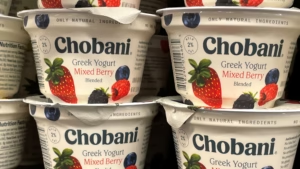
How to Choose the Right Yogurt Cup Filling Machine for Your Business?
Struggling with product spoilage? A contaminated filling process can destroy your yogurt’s quality and your
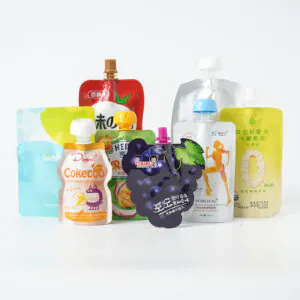
How Does Spout Bag Filling Machine Work?
Struggling with slow, messy manual filling? Worried about inconsistent product quality? An automated spout filling
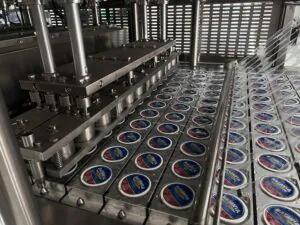
How does a servo driving system improve a high-precision filling machine?
Are you losing money from inaccurate filling? This product waste hurts your brand and your
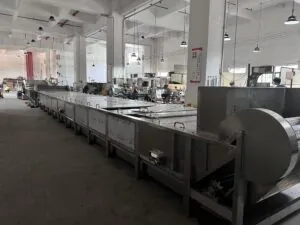
What is the Purpose of an Auto Pasteurizer in a Food Production Line?
Are your food products spoiling too quickly? This waste costs you money and limits how
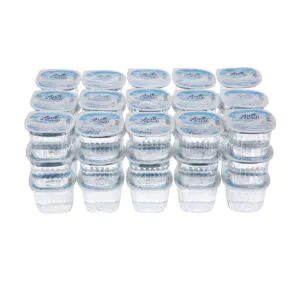
How Do You Fill Mineral Water with Cup Filling Machine?
Struggling with high investment costs for bottling mineral water? There is a simpler, more affordable

